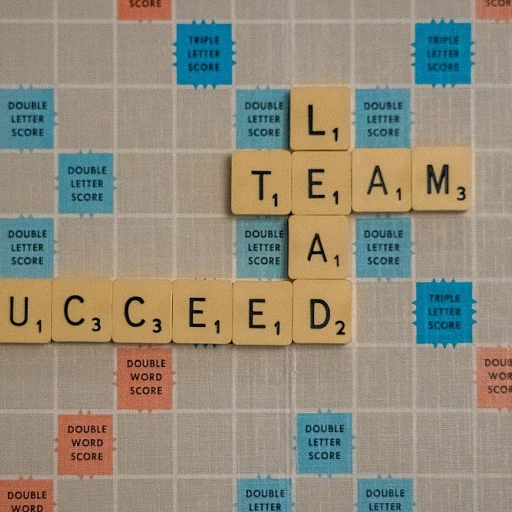Understanding the Landscape of Richland 2 Employment
Exploring Employment Opportunities in Richland 2
Richland 2 School District is a significant employer in South Carolina, offering a diverse array of job opportunities across its educational and administrative spectrum. As part of the county school system, the district encompasses a range of positions from early childhood education to secondary instruction, appealing to a wide array of professionals seeking to advance their careers.
Over the years, Richland 2 has experienced growth, thus expanding its workforce needs across various departments. Whether you're interested in a teaching position at an elementary school or a director role in education services, the district offers a dynamic environment for career development. Specialized roles such as teacher specialists, special education experts, and talent acquisition professionals are continually sought after to maintain the district's high educational standards.
Understanding the School District's Scope
The district spans a significant portion of the Columbia area, providing education services across Richland County. Its operations include numerous elementary, middle, and high schools, all contributing to a vibrant educational landscape. The district's focus on diversity and inclusion is mirrored in its hiring practices, ensuring a wide-ranging, inclusive environment for both students and staff.
The role of the executive director and senior chief in operations and student services is pivotal to maintaining the district's standards. As the district evolves, the necessity for seasoned professionals to guide the educational narrative becomes even more crucial. Additionally, positions within the HR office, including director roles, continue to be vital for overseeing effective communications and employee services.
For potential applicants, the choice of roles is extensive and offers a chance to impact educational outcomes significantly. Richland 2 is committed to providing not just jobs, but promising careers that contribute to the community's growth.
To further understand the strategies involved in crafting effective leadership goals that align with the district's objectives, future applicants can gain insights into how to fulfill roles robustly and effectively within this thriving school system.
Effective HR Communication Strategies
Communicating Effectively in the Modern HR Environment
In the evolving landscape of Richland School District Two, effective communication strategies within human resources are pivotal for fostering a dynamic work environment. Ensuring seamless communication can directly impact the recruitment and retention of qualified teachers and specialists, as well as influence the overall job satisfaction of employees. Here are some proven strategies:
- Open Channels of Communication: Encouraging open dialogue between the district's HR department and its employees, including teachers and administrative staff, fosters trust and transparency. Regular updates on policy changes, job opportunities, and employee services are essential for maintaining engagement.
- Employee-Centered Approach: Tailoring communication to meet the specific needs of the workforce is crucial. For instance, providing clear guidelines and resources for elementary, middle, and high school educators can streamline processes and enhance productivity.
- Leveraging Technology: Utilizing digital platforms for communication ensures timely dissemination of information across all levels, whether it concerns student services, special education advancements, or new executive roles like the director of secondary instruction.
- Feedback Mechanisms: Implementing robust feedback systems allows employees to voice their concerns or suggestions, which can then be addressed by senior chief officers or the executive director. This proactive approach aids in refining communication channels and processes.
These strategies not only enhance the effectiveness of HR communication but also contribute to building a strong employer brand that appeals to potential applicants and current employees alike. Understanding the role and impact of effective communication tools and practices, as detailed in the role and impact of a Chief Training Officer in modern organizations, can offer valuable insights for HR professionals looking to make a difference.
The Role of Technology in HR Communication
The Influence of Technological Advancements
In the evolving landscape of human resources within Richland School District Two, the integration of technology holds a transformative impact on HR communication strategies. Over the years, the district has made significant strides in leveraging technology to enhance communication efficiency and streamline processes.
One key area where technology plays a vital role is in talent acquisition. The use of digital platforms allows for the seamless posting and management of job listings, making it simpler for applicants to find and apply for positions. For instance, tools that automate resume screening enable HR specialists to focus on potential candidates, thus optimizing the selection process.
Furthermore, technology facilitates interactive and real-time communication, connecting the district's employees and administrators more effectively. Tools such as video conferencing and collaborative platforms have bridged the gap between the office and remote settings, ensuring continuity and inclusiveness in team interactions.
Electronic Human Resource Management (E-HRM) systems serve as another technological advancement employed in the district. These systems streamline various HR functions, from payroll processing to the management of employee records, creating a more organized and efficient work environment.
The intersection of technology with education services, particularly in the context of early and elementary education, also highlights the district's commitment to innovation. By introducing digital learning tools, Richland County schools foster a resourceful environment that supports both educators and students.
As the Richland school district seeks to strengthen its employer brand, technology remains a pivotal asset. It enables the district to communicate its unique employment value proposition, appealing to prospective teachers, directors, and specialists who are passionate about shaping the future of education in South Carolina.
To understand how the district is mastering the art of human resources staffing through technology, visit HR Communication for in-depth insights.
Building a Strong Employer Brand
Enhancing Employer Brand in the Richland County School District
Building a strong employer brand in educational sectors like the Richland County School District involves emphasizing the unique aspects of working within such environments. From the vibrant elementary education programs to the comprehensive student and special education services, opportunities for professional growth are abundant. This county school district has been consistently recognized for integrating cutting-edge teaching strategies, which enhances its attractiveness to prospective applicants. An engaging and authentic employer brand facilitates the attraction of top talent in various educational roles, from teaching positions to administrative and specialist jobs. Those seeking opportunities within the Richland district could benefit from the supportive and cooperative culture that prioritizes educator and employee growth. The school district offers both early and secondary instruction, creating dynamic environments supported by the executive team, including the chief operations officer and senior executives steering education services. Moreover, the Richland school district’s initiatives in diversity and inclusivity provide a solid foundation for a compelling employer brand. Prospective employees are likely to be drawn to its commitment to creating an inclusive environment that celebrates differences, thereby enhancing the workplace culture. For job seekers interested in teaching or administrative positions, understanding the district's approach to diversity in education, its talent acquisition objectives, and dedication to teacher and student development is crucial. The blend of tradition and innovation, reiterated by its executive director and HR specialists, underscores the long-standing choice for many educators in Columbia, South Carolina. By fostering an adaptable and inclusive workplace, the Richland school district continues to offer promising opportunities. As part of their branding efforts, current and potential employees are encouraged to envision a fulfilling career path that not only caters to personal growth but also enriches the community.Navigating Diversity and Inclusion in HR
Championing Diversity and Inclusion at Every Level
Creating a truly inclusive environment in the Richland School District requires a comprehensive approach to human resources communication. This commitment to diversity is not only about policy but about culture and practice. The district Columbia, as part of Richland County, strives to ensure everyone, from the talent acquisition specialists to the chief operations officer, embodies inclusivity. An integral part of this strategy is understanding the varied backgrounds of applicants and current employees. This involves recognizing the unique conditions and experiences of those working in elementary school settings, early childhood education, and special education services. Inclusivity is especially vital in a diverse county school environment where every teacher, student, and executive director plays a role in shaping experiences.Creating Inclusive Policies and Procedures
The school district sets clear objectives for embracing diversity in its recruitment and retention practices. This means that HR communication should reflect these values, whether that's in job postings for full-time positions or when communicating internally with staff at all levels including the senior chief of secondary instruction or the director of secondary education. Policies are drafted to not just fulfill legal requirements but genuinely enhance the working conditions and opportunities for all employees. Such guidelines ensure that decisions about employment are made based on the best interest of the district and community, fostering a space where every individual's contribution is valued.Building a Culture of Engagement
Human resources communication in Richland School District works towards cultivating an engaged workforce by promoting diversity and inclusion. Directors and operations officers actively participate in developing education services that reflect the community's needs, recognizing that a school's environment directly impacts both academic and emotional growth. This culture extends to ongoing training and development initiatives, encouraging the professional growth of each district employee. By doing so, the district not only meets its operational needs but also supports the long-term success of its elementary and high schools. Ultimately, navigating diversity and inclusion in HR practices is a multifaceted endeavor in Richland. It involves commitment from the top echelons of leadership down to the elementary-grade classrooms, impacting not just the employees, but the students and community at large.Future Trends in HR Communication
Embracing Future Developments in HR Communication
In the dynamic workforce environment of Richland School District and other educational settings in South Carolina, understanding future trends in HR communication is essential for ensuring the efficiency and effectiveness of operations. The future demands innovative approaches in communication to meet the needs of a diverse talent pool, ranging from applicants seeking positions as teachers in Columbia, to specialists involved in special education and secondary instruction.- Artificial Intelligence and Automation
AI-driven tools are paving the way for more personalized communication and streamlined processes. AI can assist in talent acquisition by analyzing applications and predicting candidate success, thereby impacting how school districts like Richland connect with potential employees. - Enhanced Employee Engagement Platforms
With the rapid evolution of technology, platforms offering tailored communication services are becoming more prevalent. This trend allows HR departments to maintain robust communication lines with current employees, such as elementary school teachers, by using the latest technology to address questions and share resources efficiently. - Data-Driven Decision Making
Leveraging data analytics can provide insights into HR practices, helping districts like Richland to improve applicant experiences and refine their talent acquisition strategies. This pivot to analytics promotes smarter decision-making in relation to hiring, training, and employee retention policies. - Continued Focus on Diversity and Inclusion
Prioritizing diversity and inclusion remains crucial in HR communication frameworks. As specialists and directors emphasize inclusivity, it becomes imperative to implement communication strategies ensuring all voices in the district school community are heard and valued.









